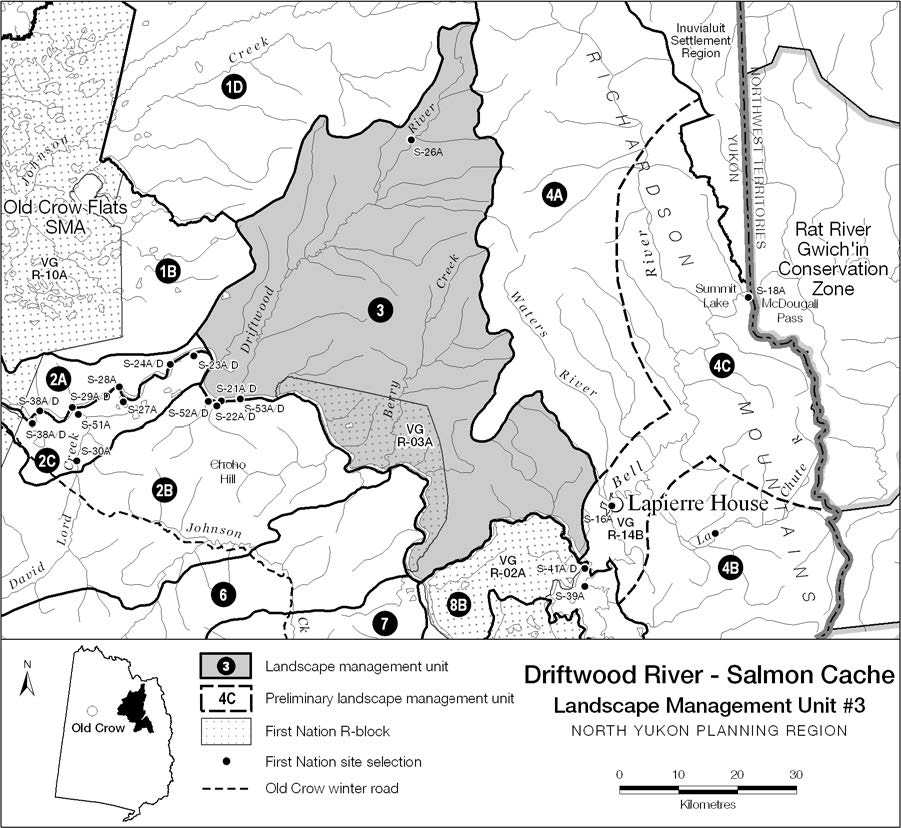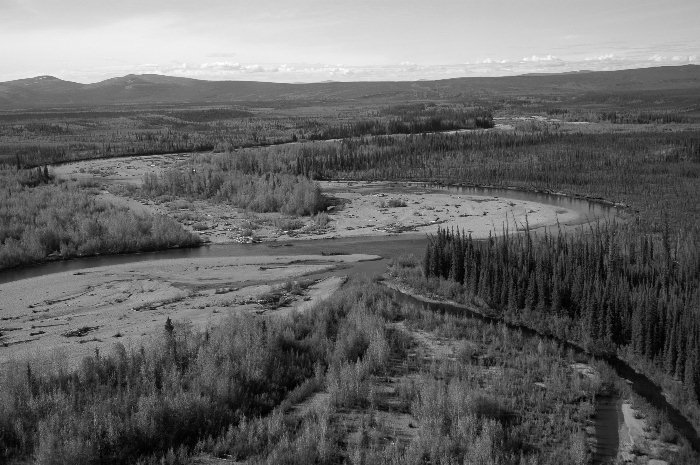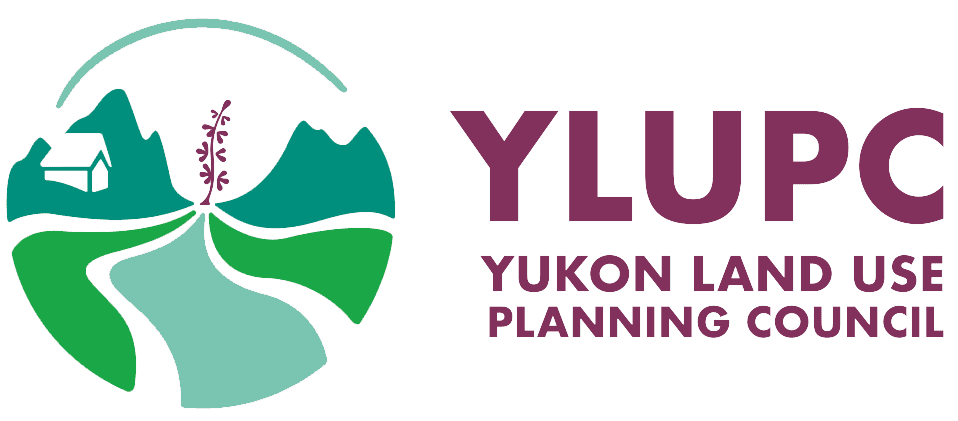NORTH YUKON PLANNING REGION:
LMU 3: Driftwood River – Salmon Cache
Land Use Designation
Integrated Land Management Area, Zone II
Land Status
Yukon public land and VGFN Settlement Land (VG R-03A and several S-sites)
Traditional Territories
Vuntut Gwitchin First Nation
Area
2,864 km2 (4.7% of Region)

Biophysical Setting (LMU 3)
Setting
Gentle pediment slopes; transition between Northern Richardson Mountains and Foothills and Old Crow Basin.
Ecoregions
Old Crow Flats, Old Crow Basin and Eagle Plains.
Bioclimatic Zones
Taiga Wooded, Taiga Shrub and Tundra (northern portion).
Habitat Types
Low elevation herb and shrub dominant; some coniferous forest and shrub; minor amount wetland and riparian.
Watersheds
Porcupine River (Driftwood River, Berry and Rat Indian creeks).
Image Explanation
Lower Driftwood River, near confluence with Porcupine River. (CWS photo)

Cumulative Effects Thresholds
Relative to LMU Size*
Surface Disturbance (%)
Linear Disturbance (km/km2)
Current disturbance (2020)
0.031
0.048
Cautionary
0.150
0.150
Critical
0.200
0.200
On the ground amounts**
Surface Disturbance (km2)
Linear Disturbance (km)
Current disturbance (2020)
0.90
136.5
Room under cautionary threshold***
3.39
293.1
Cautionary
4.30
429.5
Critical
5.73
572.7
*These are proportional to the size of the LMU, and correspond to table 3-2 of the Approved Plan. They are measured in the % of the LMU that can be disturbed (“Surface Disturbance”) and in km/km2 (“Linear Disturbance Density”).
**These are amounts that can be measured and apply to the whole LMU and would be more familiar to project proponents and regulators. They are measured in km2 of disturbance and in km of linear disturbance (e.g., roads, trails and cutlines).
***How much more disturbance can be added to existing disturbance before the cautionary threshold is reached.
Amount of disturbance relative to the cautionary theshold:
%
Surface Disturbance
%
Linear Disturbance
Ecological Resources
Porcupine Caribou
Caribou concentrated use in four seasons - summer, fall migration, rutting and winter. Calving occurs infrequently.
Moose
Significant habitats in all seasons. High quality winter habitat in Driftwood River corridor.
Marten
Low - moderate quality winter habitat.
Sheep
No known sheep populations.
Fish
Identified over-wintering habitat in Porcupine River; potential over-wintering habitat in lower Driftwood River.
Other Species
Significant grizzly Bear habitat around mouth of Berry Creek and Salmon Cache archaeological site.
Wetlands and Lakes
Lower Driftwood River and Berry Creek corridors contain wetlands.
Riparian Areas
Driftwood River valley, Berry Creek valley and numerous small stream valleys.
Major River Corridors
Porcupine River
Heritage, Social and Cultural Resources
VGFN Heritage Routes and Sites
Old Crow to Ft. McPherson trail, via Salmon Cache and Lapierre House.
Other Heritage and Historic Resources
Significant heritage resource values. Documented caribou fences and many archaeological sites.
Current Community Use Areas:
Lower Driftwood River, Porcupine River, Salmon Cache and Burnt Hill.
Economic Development
Transportation and Access
No existing transportation infrastructure; a conceptual access route has been identified in the southern portion of unit*.
Traditional Economy
Summer and winter subsistence and forest harvesting; general land use.
Tourism and Recreation
Low interests and activity (outside of Porcupine River corridor).
Oil and Gas Resources
Overall low potential; southern margin of unit is in Eagle Plain oil and gas basin.
Mineral Resources
Overall low potential; western margin of unit contains high potential.
Aggregate (Gravel) Resources
No identified resources.
Forest Resources
Large stands of riparian spruce limited to lower Driftwood River.
* Source: Yukon Government, Department of Energy Mines and Resources. 2003.
Special Management Considerations
- North Yukon Land Withdrawal prohibits land disposition and resource exploration activities.
- Important caribou concentrated use area during multiple seasons; Porcupine caribou cross Porcupine River at this unit during fall and spring migration.
- High heritage resource and cultural values.
- Maintain opportunities for community use and subsistence harvesting.
